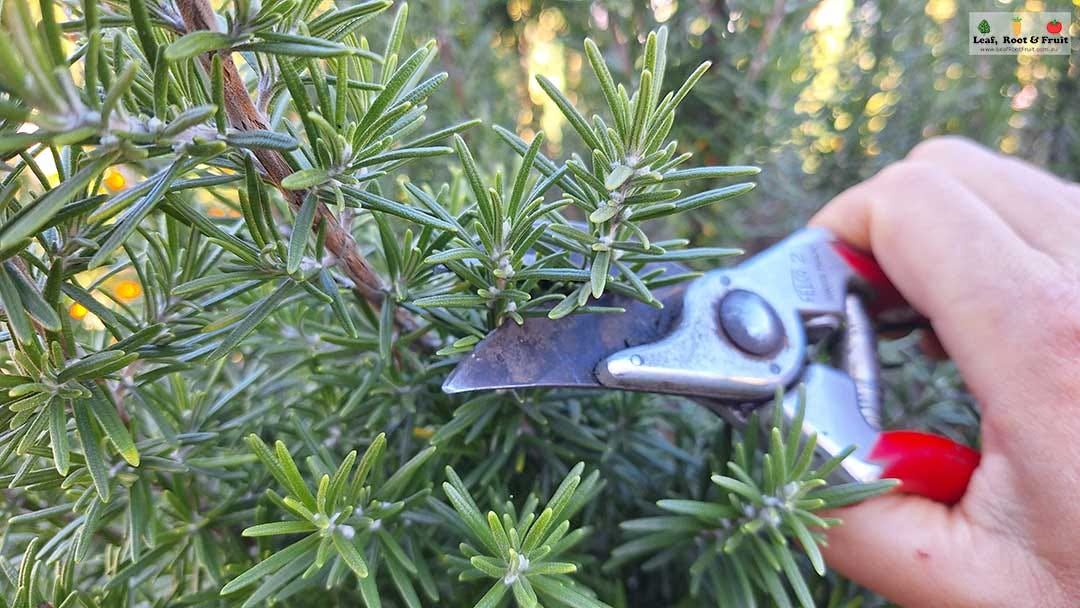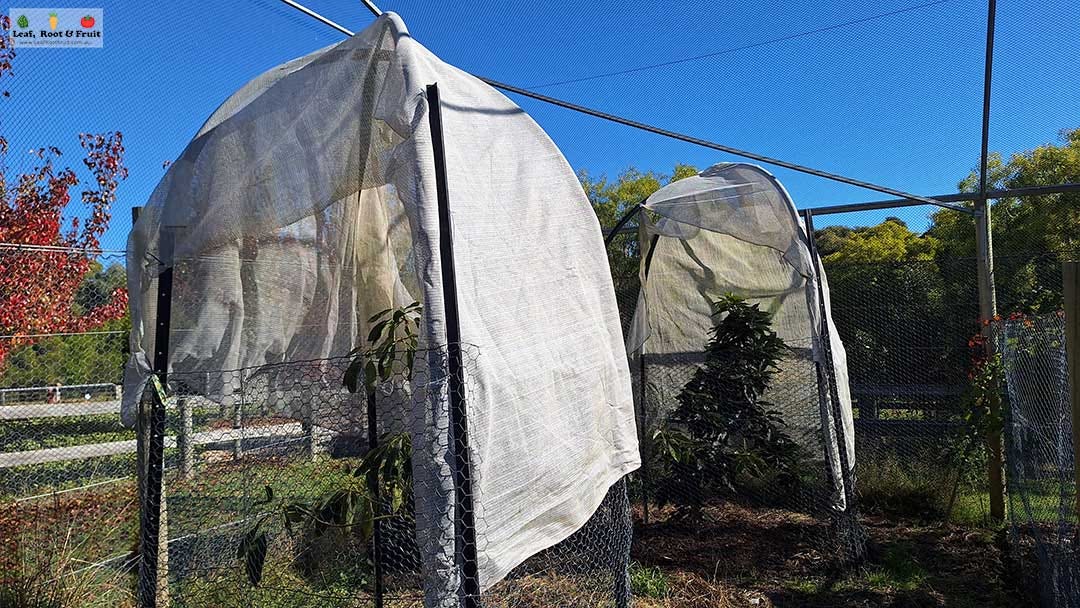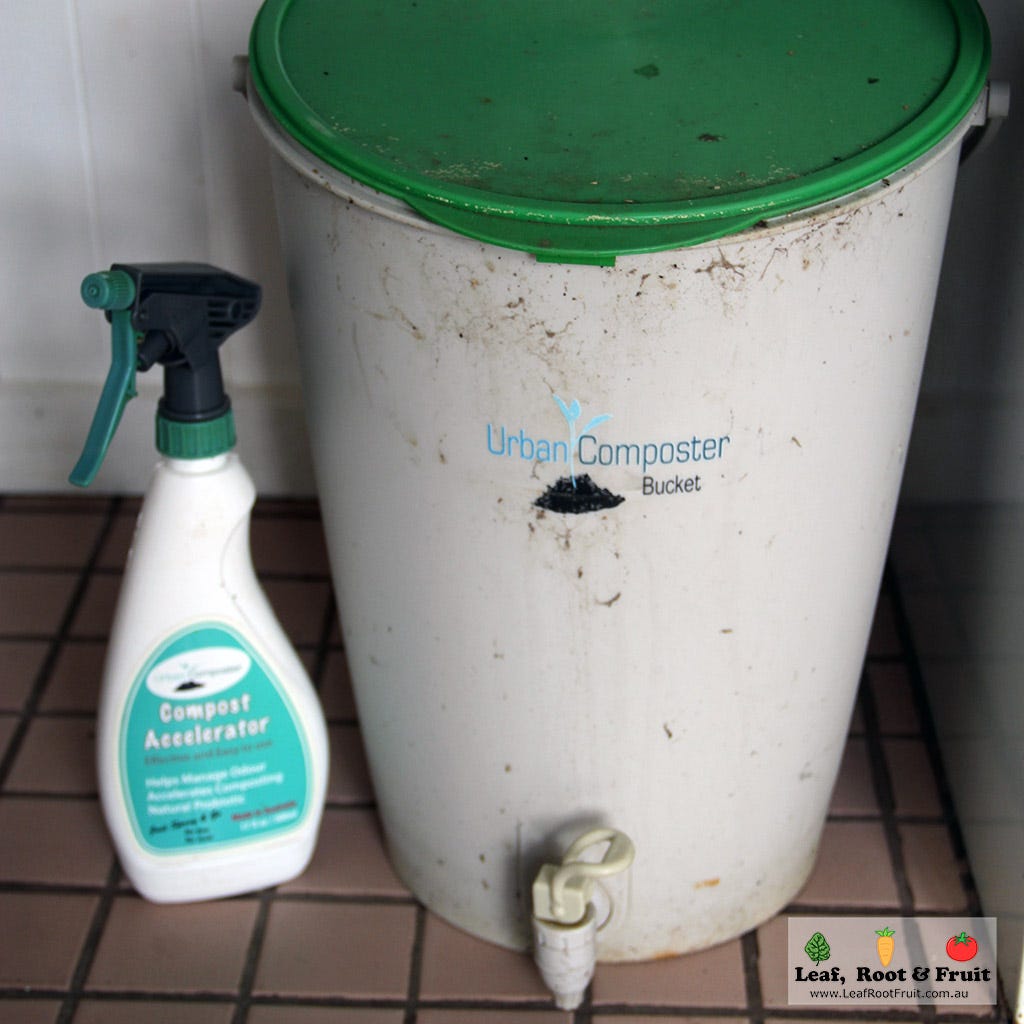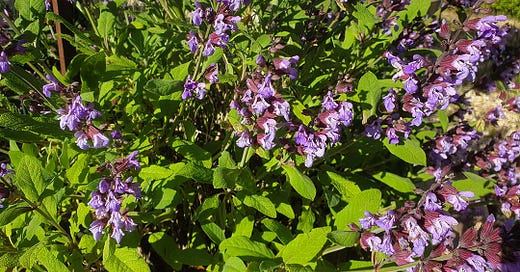Dividing Rhubarb, Some Shady Advice, Bokashi Buckets and Herb Haircuts
Your questions answered
Do you have a food-growing question you’d like me to answer? Check out these guidelines to find out the best way to ask.
Time for herb haircuts?
I love including perennial, evergreen herbs such as sage, thyme and rosemary in the understory of my edible forest gardens (see a list of other potential understory plants here). They can be effective ground covers and act as a living mulch, their flowers are great for attracting beneficial insects and pollinators and you can even use them in cooking.
Most of the perennial herbs are bulletproof and once planted they don’t need much in the way of special attention or care. They rarely need watering (in fact, excessive irrigation is the best way to kill them), nor do they need fertilising. However, in time they may become overgrown and spindly. You can consider giving them a winter haircut to encourage the plants to be more bushy, and to promote a flush of new growth in spring.

You can use the prunings as cuttings to strike even more plants.
Shade cloth: what’s the best choice?
I'm thinking of putting a structure over my veggie gardens with shade cloth. My dilemma is black or white. What advice would you give? Esther W, Rushworth
I’ll preface this answer by saying that I have very little experience on this topic. I’ve only used shade cloth in the garden twice:
To protect a large greenhouse from getting too hot in summer
To protect my avocado trees from heat and frost. After decommissioning the greenhouse, I reused some of the shade cloth for this purpose.

Shade cloth comes in different colours but also different densities. But which is best? There are many different scientific studies on the impact of both characteristics and how they influence plant growth.
The percentage density seems to be the bigger of the two influences. For edible crops I’d use a shade cloth with a low percentage density, say 30% or 50%. Anything greater than that and your light-loving vegetables may become a bit “leggy” as they try to chase the sun. More shade-tolerant plants such as lettuce could cope with a heavier percentage density but your tomatoes may suffer.
Different research papers highlight that some plants perform better under shade cloth of certain colours, while for others it doesn’t matter so much. Red seems to have the most positive outcome for the widest range of plants.
A white shade cloth with 50% density would be my choice, and it’s what I’ve used in the past. It’s cheap, practical and relatively easy to obtain. I’d make sure that the shade cloth is retractable. That way you can roll it out on days when heat is forecast and allow the plants to access full sun for the rest of the year.
Readers, do you use shade cloth to protect your plants? Can you share any advice with Esther?
Compost solutions to beat the rats
What's your take on the Bokashi method of composting? I've never tried it, but I'm considering it because I've decided not to put food scraps into my compost bins anymore, because of rats.
Nishant P, Hawthorn
It’s great that you’re so keen to beat the rats. One of the best strategies for dealing with rats is to limit the food they have access to. Pick your fresh produce regularly, before the rats get to it.
Avoid putting food scraps into a compost “rat hotel”, and instead find a rodent-proof way to compost.

The main benefits of Bokashi buckets are that they don’t smell and you can use them to process anything that was once living (including citrus, onions and meat, which are not advised for worm farms). They are small, so they can be kept under the kitchen sink.
The downside is that a Bokashi bucket handles only small volumes of waste and it creates a very acidic product that is best composted before being added to the garden. I also don’t like the fact that you need to purchase a commercial product (innoculated bran or a liquid enzyme spray) to add to the contents every time you add more material to the bucket.
See my guide to compost solutions to understand more about rat hotels and which compost solution is right for you. Or you can come along to my upcoming composting workshop on August 24 to get some hands-on experience with setting up a hot compost heap.





